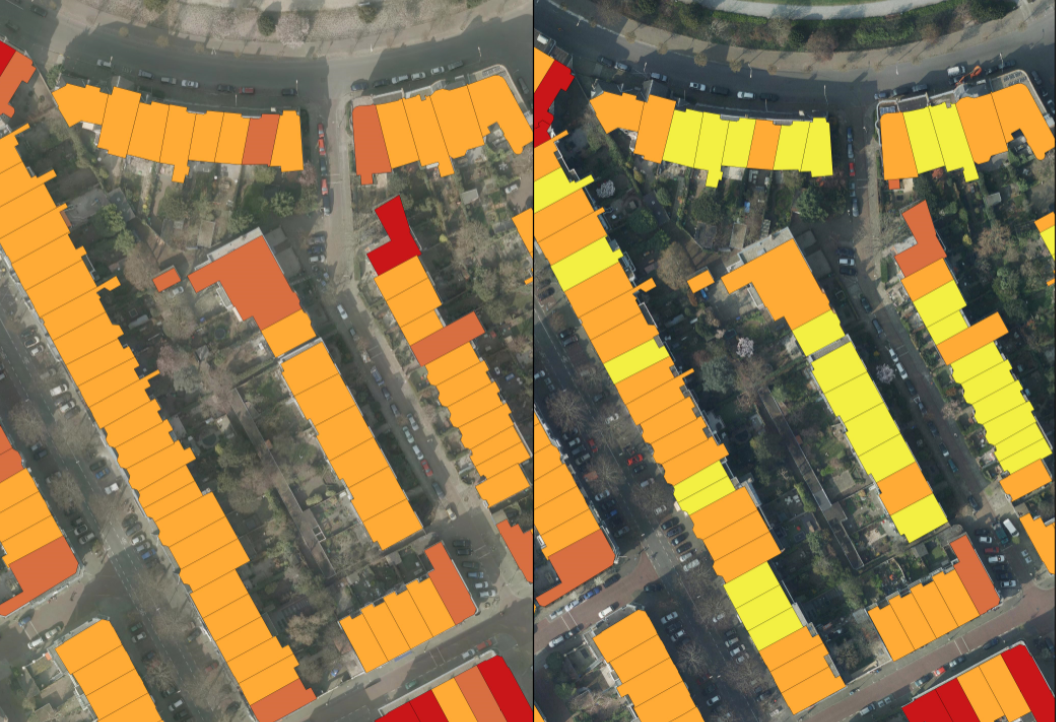Waterlabel
The challenge
One of the main challenges in adapting cities to extreme climate events is a lack of space. As most urban area is privately owned, municipalities have limited space to implement measures to increase resilience. This fraction of public available space is often not enough to retain the runoff generated during extreme precipitation events. Privately owned areas need to contribute to resilience as well. To do so, more insights is required in the runoff generated by private property and owners need to be encouraged to increase their properties climate resilience.
Our solution

Nelen & Schuurmans has introduced Waterlabel, a straightforward approach to determine the resilience of a building to extreme rainfall events. Waterlabel assesses the building’s resilience towards extreme conditions and specifically its capability to retain and reduce runoff during heavy precipitation. By providing these insights, Waterlabel provides a means to engage citizens to implement climate adaptive measures. Waterlabel is complemented by an interactive tool that enables citizens to submit their climate adaptive practices such as changing the type of roofing, disconnecting drainpipes, introducing green infrastructure, or installing rainwater storage facilities.

The information given is processed by an algorithm to assess the effectiveness of the implemented measures. The outcome is presented as a water label ranging from A to G. Label A means that the water measures reduce the runoff from the plot and surrounding areas, therefore reducing the impact of extreme precipitation events downstream. Label G implies that the plot has low resilience, leading to maximum contribution to flooding.
The outcome
The Foundation for Applied Water Research (STOWA) and the Foundation for proper care of wastewater, rainwater and groundwater in urban areas (RIONED) improved and standardized the Waterlabel methodology. The method has been incorporated into the website where the Waterlabel of buildings can be requested, entered or modified for any address in the Netherlands. Almost three million residences and buildings already have a Waterlabel. Multiple municipalities and waterboards have embraced the methodology to positively stimulate their residents and offer them climate resilience action perspectives.
All cases